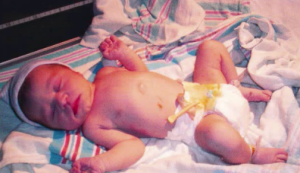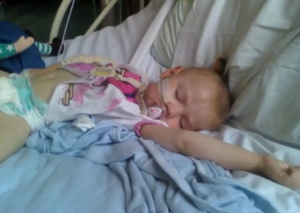What is Rett Syndrome ?
Rett syndrome is a rare type of genetic disorder that primarily affects girls. The syndrome severely affects a child’s ability to talk and move. Children with this disorder look normal at birth but start to exhibit the symptoms from 6 months of age onwards. Sufferers cannot walk and talk properly, but instead use hand movements to express themselves.
Parents normally feel overwhelmed upon learning that their child is suffering from Rett syndrome. Even so, treatment methods help both the patient and parents in managing the physical, social, emotional and developmental effects of the syndrome.
Causes of Rett Syndrome
It is not clear why this rare type of genetic disorder occurs but experts believe that it is due to the mutation of MECP2 gene found on the X chromosome. What moves this particular type of gene to act abnormally is still unknown, but it has a huge influence on other genes involved in the development. In addition, the syndrome is rarely inherited and often occurs spontaneously in a child’s own DNA. There is nothing that could be done to prevent it from happening, nor control the risk factors that make certain groups of people more susceptible than others.
Incidence of Rett Syndrome
The disorder is known as a girls-only syndrome because majority of those affected are young females, often within the first two years of life. But it rarely occurs, affecting only 1 in 10,000 to 15,000 births. Although the condition almost exclusively affects girls, still the male gender can also be touched by the disorder. Unlike girls who have two chromosome X, boys only have one which makes the syndrome more serious and even fatal for them. In fact, only a few boys with the disorder live up to adulthood as most die prior to birth or during the early stages of infancy.
Symptoms of Rett Syndrome
The condition is barely noticeable at birth as the affected child often lives normally within the first six months of life. However, changes involving the child’s developmental and neurological abilities start to emerge and become more defined after a year or two.
- Hand movements
Parents will find that their child is developing some kind of stereotypic movements of the hand like rubbing, tapping, clapping, hand wringing and squeezing. The syndrome also disables the child’s ability to make purposeful movements of the hands.
- Coordination problems
The affected child loses her ability to crawl, and eventually, to walk properly. Furthermore, she will experience difficulty in chewing or swallowing her food, as well as in feeding herself. Strange eye movements such as blinking may also crop up.
- Speech problems
Children affected by Rett syndrome ultimately lose their ability to communicate or speak. They can often be observed to be uninterested in their surroundings, people and even toys.
- Behavioral problems
The syndrome also affects the child’s intellectual abilities, resulting in the manifestation of abnormal behaviors. This may come in the form of unusual facial expressions, mannerisms and odd behaviors like screaming or laughing for no obvious reason. Their irritableness and agitation tend to increase as they grow older.
Aside from these manifestations, Rett syndrome also affects the child’s heart resulting in heart problems like arrhythmia. It can also give rise to other medical conditions such as seizures, scoliosis, GERD and constipation.
Diagnosis of Rett Syndrome
Proper diagnosis is done by evaluating the behavior and symptoms that the child is displaying, also taking into account her family and medical history. Doctors often use the criteria established by the Diagnostic and Statistical Manual of Mental Disorders to diagnose the syndrome more accurately. He or she may conduct diagnostic tests, depending on the symptoms shown by the patient. These may include urine test, blood test, hearing test, EEG test and vision test. CT scan and MRI may also be requested. Genetic testing is often done not only to confirm the disorder but determine its severity as well.
Management of Rett Syndrome
Although the existing treatment methods do not really cure the condition, they do help in managing the associated symptoms by preserving and improving movement, slow down the progression of the loss of abilities as well as promote social contact to stimulate communication. A multidisciplinary team consisting of speech and physical therapists, doctors and psychologists will design the treatment plan for the patient. Treatment often involves the following:
- Medications
These are used to help alleviate symptoms like muscle stiffness and seizures.
- Nutritional support
Sufferers have different nutritional needs and these must be met for proper growth and improved social and mental abilities.
- Therapy
This may involve using casts or braces to help those who are suffering from scoliosis and physical therapy to assist patients in maintaining balance and walking skills. Patients may also undergo speech therapy to help them learn verbal communication skills.
- Training and education
A girl with Rett syndrome should engage in activities that are appropriate for her age and attend school that can provide her with the strong motivation
Rett Syndrome pictures



